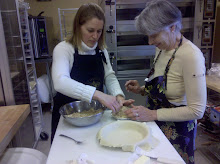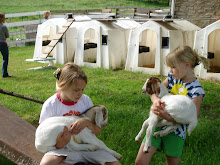In March, I traveled to Albany with a bus full of Farm Bureau members from all over Western New York. It was my third trip since becoming a board member of the Niagara County Farm Bureau. What the heck is Farm Bureau you ask? Well, I asked my father the same thing when I was a kid as he was rushing off to his monthly Farm Bureau meetings (one of many meetings Dad seemed to go to). Farm Bureau is actually a national agricultural lobbying organization but each state has its own bureau, and each county has its own board. It is defined as “a non-governmental, volunteer organization financed and controlled by families for the purpose of solving economic and public policy issues challenging the agriculture industry.” The policy development portion takes a “grassroots” approach. Many times Farm Bureau is simply summarized as “the voice of agriculture”.
I think that wanting to voice an opinion and make a difference in agriculture must run in the family. My father, grandfather, and great-grandfather were also Niagara County Farm Bureau board members. In fact, I found an old newspaper article from 1937 that quoted my great-grand father Walter Blackman Sr., “I do not know of a farmers’ organization from which greater and more far-reaching benefits are derived than those received through the Farm Bureau.”
Well - back to the Albany trip. This is our state’s opportunity to lobby and meet with all of the state Assemblymen/women and Senators to discuss important agricultural policy and budget issues concerning our own county and state. A group of us board a coach bus in Lockport, head to the thruway and pick up members along the way up to the Finger Lakes. We arrive at the Capitol building for informational meetings on important lobbying topics. Then we host an event for the legislators and staff featuring food and beverages all grown and produced in New York State. I’m always amazed by the variety and quality of products that this state creates. We sampled everything from wine and beer to ice cream and potato chips – oh yea, a bunch of healthy fruits, vegetables, cheeses and meats too!
The following day we have scheduled appointments with our legislators, including Senator George Maziarz and Assemblywoman Francine DelMonte. We try to educate them of our stance on specific political issues. This year’s topics included, of course, budget cuts affecting farming in NYS, labor issues, DOT regulations that affect trucking, and falling milk prices to name a few. After the Albany trip, some of the NYS Farm Bureau members head to Washington to lobby there. Maybe someday that will be next for me.
I learn a lot on these trips from the other farmers and the very knowledgeable New York State Farm Bureau staff. I guess in my family we’ve chosen to be a “voice in agriculture”. My belief is that it’s important in life to find a voice in something, especially now.
Links: New York Farm Bureau -
http://www.nyfb.org/Niagara County Farm Bureau -
http://www.nyfb.org/niagara/








.jpg)







